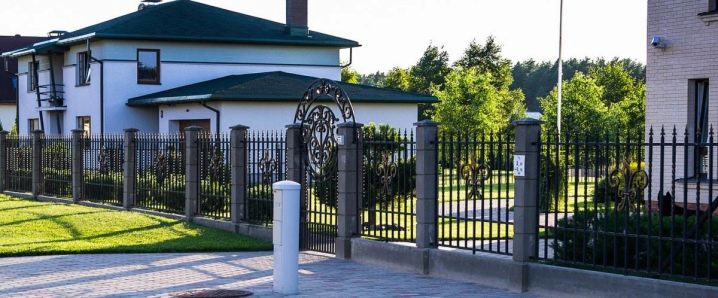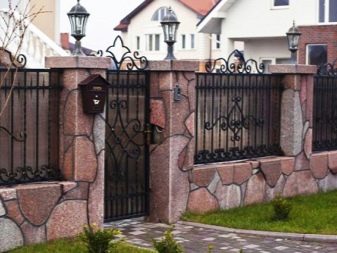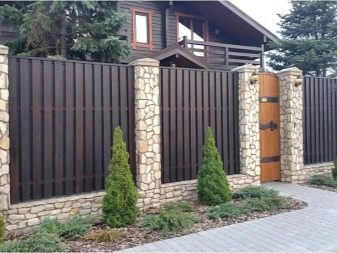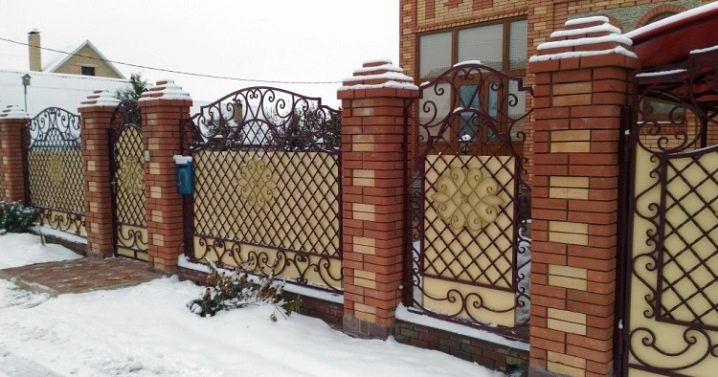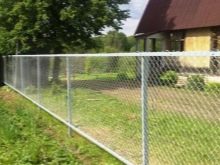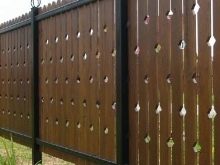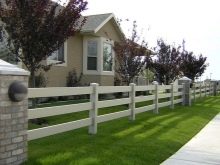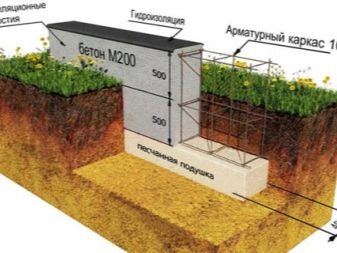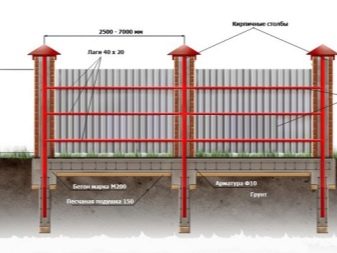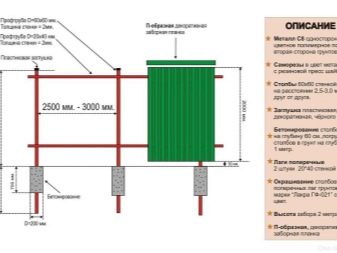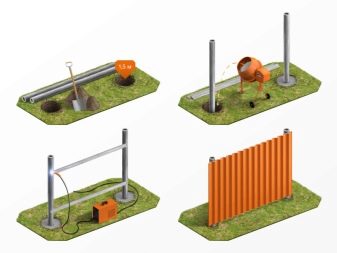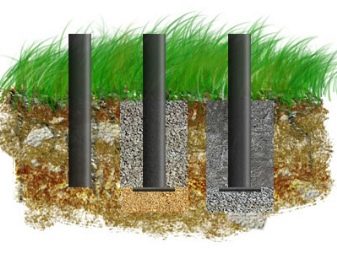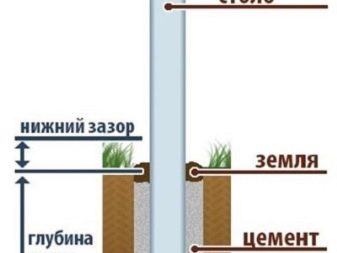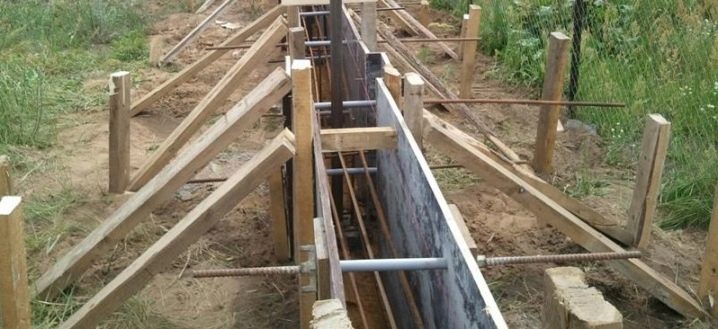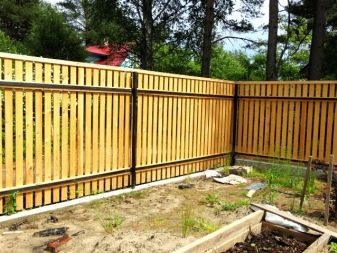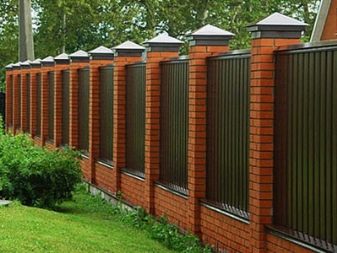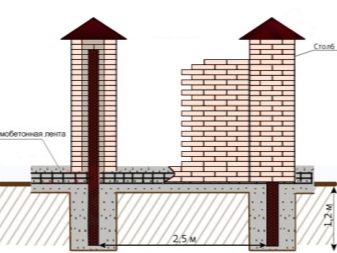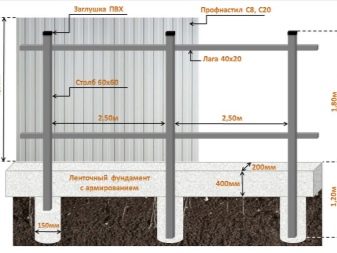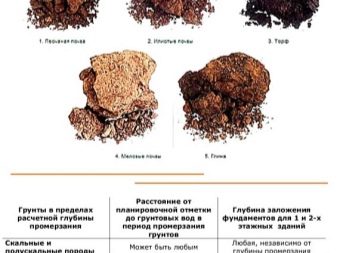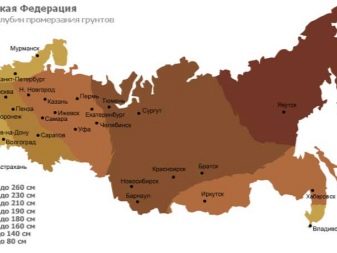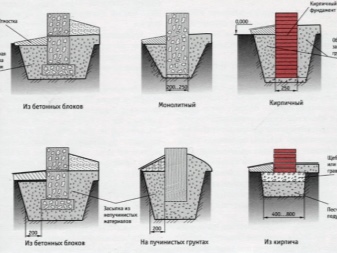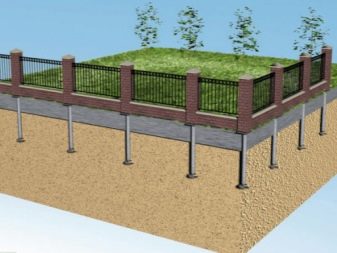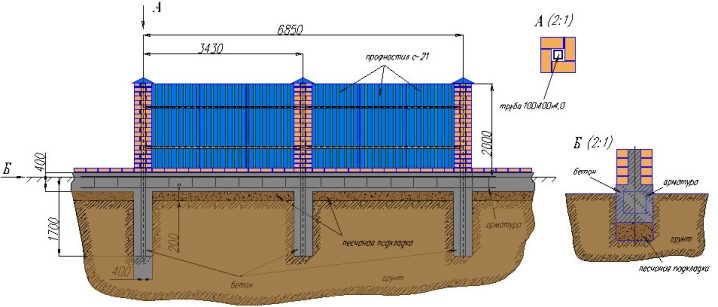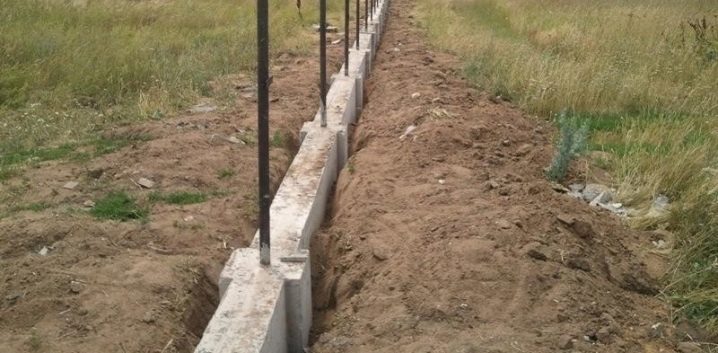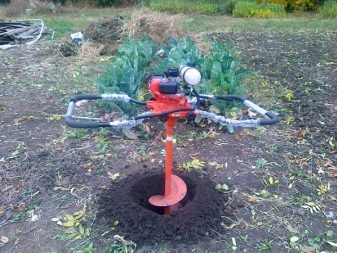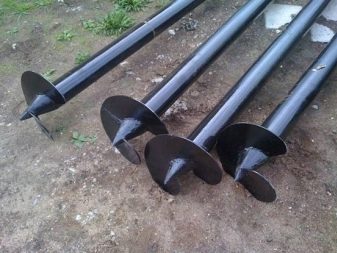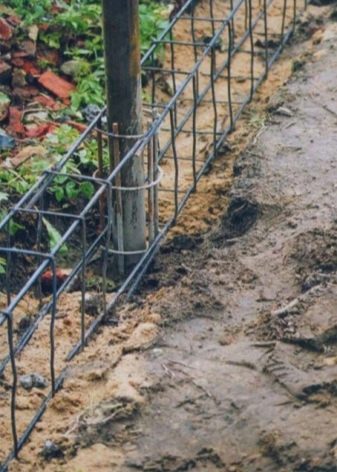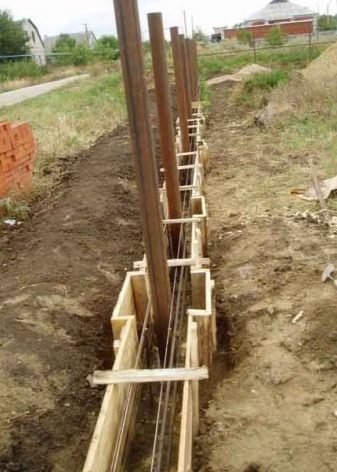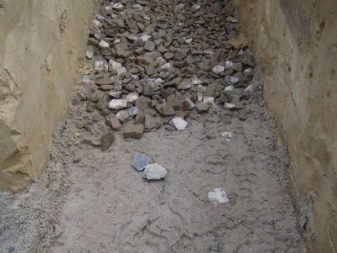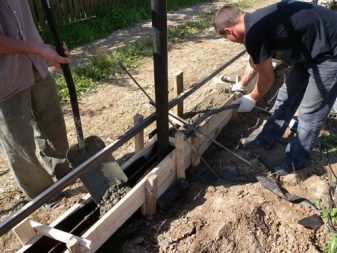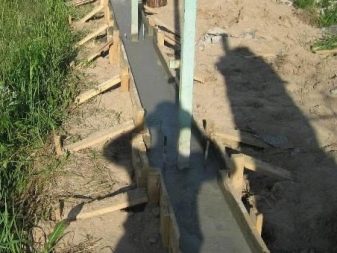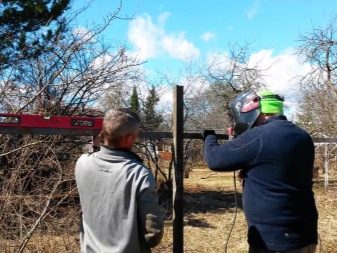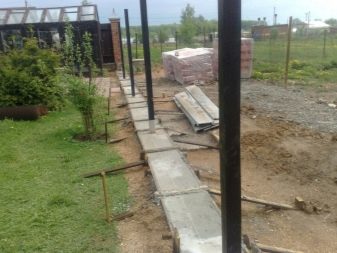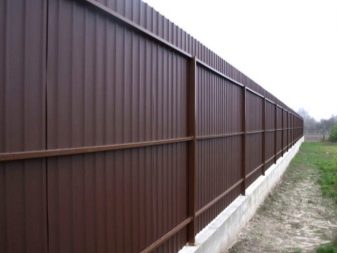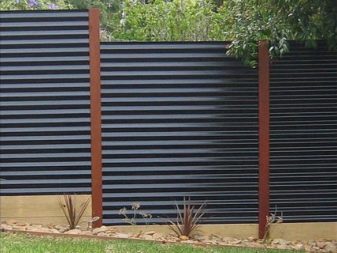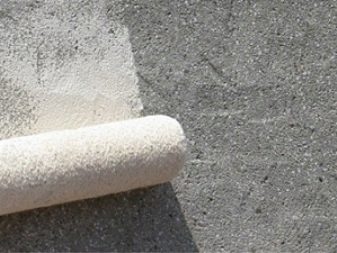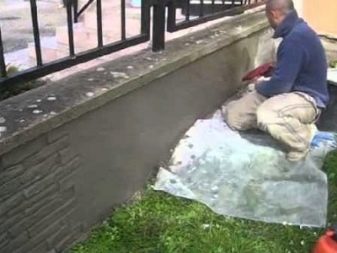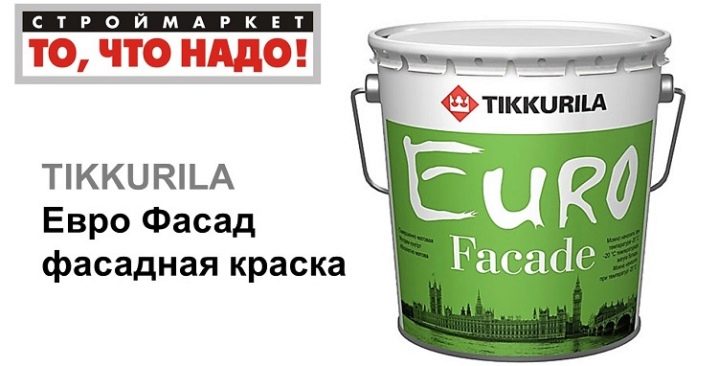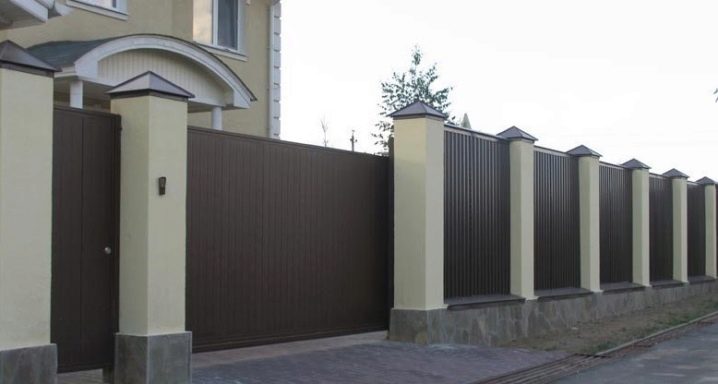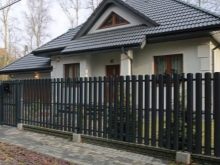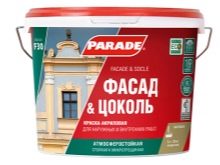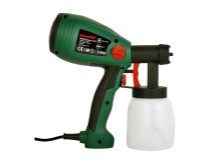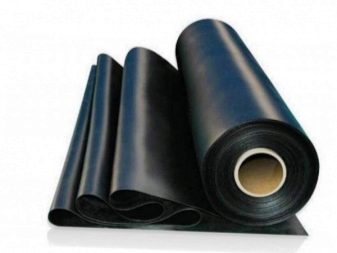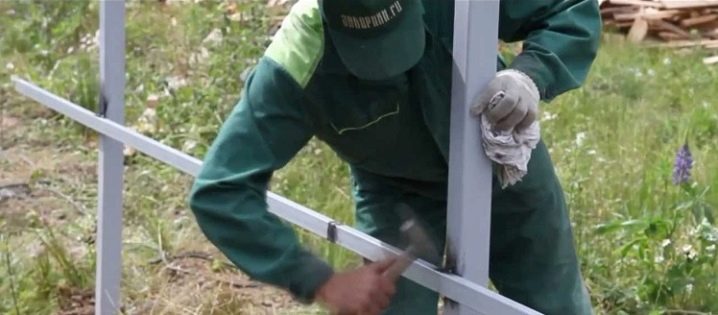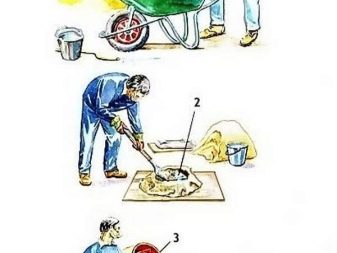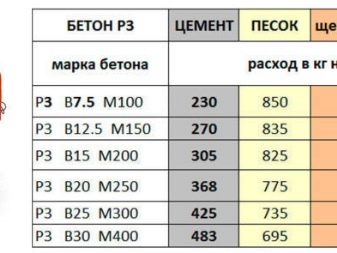The foundation for the fence: the types and features
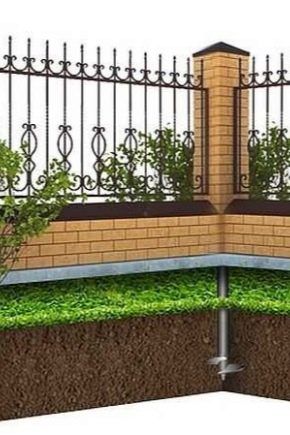
Almost all owners of personal plots sooner or later face the problem of installing a fence. But no matter how light or heavy it is, in any case, in order for the construction to be reliable and to function properly for a long time, it is necessary to build the foundation.
Special features
The foundation is the main bearing part of the fence. On how correctly chosen its type and how well it is made, depends on the service life of the entire building envelope.If the foundation is weak or it is not at all, then the fence may squint, it may lead during the swelling of the soil during the spring thawing of the soil or it may fall at all.
What is it needed for?
The foundation for the fence performs several important functions:
- ensures the stability of the entire structure of the fence;
- allows you to evenly distribute the load on the design of the fence;
- in the presence of a foundation, the soil lingers on the site and is not washed away from it by water during rain or melting snow;
- serves as a barrier to penetration to the area of melt water;
- with the foundation, the fence looks much more aesthetic and reliable.
Do I have to do?
Despite the above mentioned important functions that the foundation performs, during the construction of the fence, many owners of personal plots, considering their costs, still think about whether it is worth making a foundation for a fence. It all depends on what type of fence decided to install on the site.
If this is a lightweight, blown construction made of a chain-link mesh or a wooden picket fence, then it is quite possible to do with concreteing only the supports themselves.But it must be remembered that even for light fences this is not the most reliable basis, and such a fence will last from the strength of 5-7 years.
If it is decided to make the fence more solid and durable, then one cannot do without a foundation corresponding to its weight.
Types of foundation
The most common variant of the device base under the fence is a strip foundation. It is best suited for the device of stone fences or fences with stone pillars, between which is fixed fencing of profiled sheets, forging, wood and other materials. The concrete base of this foundation allows you to evenly distribute the load. The tape base is suitable for installation in it of metal supports with the subsequent fastening to them designs of the fence.
For a device of this type of foundation, first a trench is dug to the calculated values of the depth and width, at the bottom of which a cushion of rubble and sand is arranged. A formwork with a height of up to 30 cm is arranged above the trench. Poles are installed inside the trench and fittings are laid. Further, the foundation is poured with concrete.
The process of pouring concrete is sometimes replaced by laying prefabricated concrete blocks.Install close to each other and pour concrete only seams between them.
The most budgetary variant of the base device for support for the fence is a columnar foundation. This type of base is most suitable for heaving soils. As supports can be used metal or asbestos pillars, brickwork on a concrete base or screw piles. The distance between the supports, as a rule, is 1.5-2 m.
Depending on the type of soil and climatic conditions, a hole under the supports is dug out at a depth of 1-1.5 m. A cushion of rubble and sand is laid at the bottom and compacted. Next, install the pillars, fix them vertically and fill the pit with concrete.
A universal option is a combined foundation, which is a combination of the two previous types of concrete foundations.
This type of foundation is used for the device of fences made of concrete slabs, forging, profiled sheet, especially in the presence of brick pillars. For the device of the column-tape foundation, first a trench is dug about 0.5 m deep.
In it in the marked places drill holes with a depth exceeding the depth of soil freezing.Next, formwork is installed in the trench, a mixture of sand and rubble is poured, reinforcement is installed. After that, the foundation is poured with concrete.
For various types of fencing
The type of fencing is one of the main factors that determines what the foundation should be.
For fencing of profiled sheets, forged elements, grids, wooden picket fence, two types of foundations are used. The first option is when the foundation is made for each support (columnar). For this, a hole is dug in the soil. A pillar deepens into it, and the space around it is poured with concrete.
The second option is a strip foundation, which is a trench dug in the ground, into which the supports are installed with a certain step and poured with concrete. This design of the foundation is used when the columns are located at a fairly short distance from each other.
The tape type of the foundation is also arranged when a stone or masonry device is intended at the bottom of the fence. In this case, the concrete foundation serves as a kind of foundation separating the clutch from the soil surface.
Separately, it should be noted that if it is intended to install a fence made of corrugated flooring up to 1.2 m in height, then it is possible to completely manage to fill the columnar foundation. With the height of the profiled sheet of more than 1.2 m will have to fill the strip foundation. Since this material is characterized by increased windage, then in strong winds the columnar foundation can simply not withstand the load, and the supports can tilt or even fall.
If you plan to make a fence with brick pillars, then the base for it should be pretty serious. Such fences are very sensitive to uneven shrinkage. A mortgage is usually installed in the pillars of brick, stone or blocks, which is associated with the crossbars of the entire building envelope.
If an uneven shrinkage occurs at the junction of crossbars and mortgage cracks may appear. To minimize such phenomena, the foundation for such fencing is arranged quite deep, necessarily below the level of soil freezing.
Bookmark depth
Another important factor that determines the reliability and durability of the intake structure is the depth of the foundation.
For light fences, a depth of 50-60 cm is considered to be the most optimal. With such a depth of laying the foundation, the required reliability of the structure is ensured, as well as the economical consumption of building materials. But if a light fence is installed on stone pillars and there will be elevated masonry between them, the foundation may be slightly raised.
With heavier structures the situation is more complicated. When building a foundation for them, it is impossible not to take into account, in addition to weight, the structure of the soil, and the depth of its freezing in this area.
The lower level of the foundation should be located 40 cm below the depth of frost penetration. To clarify this mark, you can use the building directories.
If a massive intake structure is erected on soft soils, in which groundwater flows quite high, it is better to be safe and lay the foundation deeper to prevent deformation of the structure due to the strong subsidence of the soil. A higher location of the foundation is possible on hard soils. The foundation on shale soils is quite possible to arrange at a depth of not more than 25 cm.
Manufacturing
Make a foundation for the fence with your own hands is easy. You only need to make all the necessary calculations in advance and clearly follow the step-by-step instructions when working.
Payment
To calculate at what depth it is necessary to lay the foundation for moderate severity and heavy fences, it is necessary to take into account the following factors: design features of the fence, depth of soil freezing, slope, soil structure and height of groundwater flow.
In order for the calculation to be correct, it is necessary to calculate the area of the foundation base. So, if we have a foundation with a length of 50 meters and an estimated width of 30 cm, then we can easily determine its area (15 m2), which will later become the basis for calculating the depth of the base.
In addition, it is necessary to determine the reliable area of the foundation, which is determined by dividing the pressure of the above-ground part by the foundation, corrected by the reliability coefficient, by the soil resistance and the working conditions factor.
The resulting value must be compared with the estimated basement area. The latter should not be less than the calculated,otherwise, it must be corrected.
Fill
On heaving clay soils it is best to perform a combined type of base. Before pouring the column-basement under the fence, you must first dig a trench corresponding to the calculation of the depth and width. In the places of installation of pillars to drill holes for installation of pillars.
Further along the entire perimeter of the future base of the fence, wooden formwork is performed. At the bottom of each pit under the pillars stacked ruberoid folded in two layers. Next, install the pillars and carry out the reinforcement of the foundation tape mesh reinforcement.
Now you can start pouring concrete. Correctly fill it with horizontal layers. If it is impossible to fill the entire tape at one time, then it should not be allowed in one place the formwork to be filled to the top, and in the other it would not exist at all. Concrete will dry for 3-5 days.
If it is hot outside, the foundation must be watered. The formwork is removed from the tape in 2-3 weeks.
Belt shallow-foundation is even easier to do. It is laid above the level of soil freezing. Therefore, such a base is susceptible to seasonal ground movements.This base is more suitable for devices in areas where the soil has a uniform structure over the entire area of the fence.
For the device of such a foundation, a shallow trench is dug (0.5-0.7 m), at the bottom of which sand (0.15 m) is laid and tamped with it. A layer of rubble is poured on top (0.15 m). Crushed stone with sand is a kind of drainage base, due to which water will be drained from the foundation. Further in the trench holes are drilled for columns with a depth of 0.3-0.4 m.
Sand is poured into each well for drainage (0.1 m). Supports are inserted into the wells and are aligned in all planes.
Next, the pillars are connected by fittings by welding. Install the formwork. After that, proceed to pouring concrete, adhering to the general rules described above. After the concrete is poured, be sure to once again make sure that the pillars are exactly.
There is one more alternative variant of the device of the base - from old automobile tires. But it is rather contradictory and does not meet with wide use in the device of the bases for intake structures.
In order to serve the foundation under the fence for a long time, it is necessary not only to properly fill it, but also to protect it from precipitation.And for this it is necessary to perform a blind area or ebb, which is a threshold passing along the entire perimeter of the foundation with a slope in the direction opposite to the foundation base.
Low tide can be done both simultaneously with the filling of the foundation, and after. To this end, a trench is dug along the entire fence line to a width of about 0.5 m and a depth of 0.15 m, which is filled with crushed stone and compacted. When performing low water at the same time as the foundation, reinforcing bars are released from it towards the blind area. If the outflow is made after the device of the base of the fence, then holes are made in it and reinforcement bars are inserted into them.
Under the reinforcement stack film roofing material and make the formwork. After that, pour concrete, and always with a slope.
On a plot with a slope
If it is necessary to conduct the construction of fence structures on a site with a large slope, then the foundation for it should not be inclined. In such cases, they build a stepped base, each section of which is strictly horizontal. In the lowest place, the foundation is performed in level with the soil. The transition from level to level is done by ledges.The length of the ledges should be no more than 2 times their height. The height must be at least 0.6 m.
If the site has a small slope, then, as a rule, the soil is leveled along the entire perimeter of the intake structure or a concrete basement is arranged.
How to paint?
To improve the appearance of the concrete foundation, you can make decorative plaster on it using the method of sprinkling with special textured plaster or colored mortar milk using a conventional broom.
The base under the fence can also be painted with special paints for concrete. In the building stores you can also find colorful coatings for curbs or curbstone. Acrylic, latex, epoxy, polyurethane, alkyd compounds can be used for painting concrete bases.
Acrylic paint is made on the basis of water with the addition of acrylic dyes. Due to the presence of copolymers in their composition, it creates on the concrete surfaces a polymer layer that protects the foundation from environmental factors. It is simple to apply such paint, it dries quickly and has an economical consumption.
Latex paint consists of water, pigments and polymers. Sometimes it may contain silicone or acrylic resins. Such paint can be applied to the concrete base immediately after it is cured.
The advantage of latex paints is increased resistance to temperature changes, the ability to fill even small cracks, moisture resistance, economical consumption.
The most durable paints for the foundation are epoxy compounds. They can protect a concrete base for nearly a quarter of a century. The paint consists of two components - epoxy resin and a special hardener, which are mixed immediately before application. The composition is applied in two layers. Epoxy coatings are vapor-permeable, which is very important for concrete substrates, resistant to the effects of the sun, acids and alkalis.
Polyurethane paint also consists of two components that must be combined immediately before applying the paint composition. Paint is applied in two layers. The advantage of polyurethane paints is that they improve the properties of concrete, are cold-resistant, form a protective coating, close microscopic cracks and pores on concrete.
Alkyd paints are made on the basis of alkyd resin.They have a rich palette, dries quickly, resistant to sunlight, frost-resistant, have an economical consumption.
But before choosing one or another tool, you need to pay attention to whether it is suitable for this climate. It is necessary to put paint only on the concrete basis, dry and cleared of pollution.
Do I need waterproofing?
There are two ways to waterproof the foundation base:
- At the bottom of the trench, a layer of polyethylene or roofing material is laid on top of the crushed stone, which will protect the concrete from moisture, which will increase the service life of the base of the fence.
- The second method is to use special waterproofing materials that are added directly to the concrete. One of these additives is penetron. When applying such a composition, the entire volume of the foundation becomes resistant to moisture penetration. Moreover, this property of concrete retains during the entire period of operation.
Professional Tips
Experienced builders when building a foundation for the fence are advised to follow certain rules:
- It is possible to start building a foundation under the fence only when the type of soil is determined,the depth of its freezing, the type of construction of the fence, its size and, accordingly, the range of possible risks will be determined. If a question remains unclear until the end, it is better to seek the advice of a professional in order not to encounter difficulties later;
- If during the calculation it turns out that the load on the concrete foundation is quite significant, then it is better to make a full-fledged strip foundation instead of a grillage, which is located almost on the surface of the soil between the deep piles;
- When preparing a concrete mix, do not use broken brick, expanded clay or wood. All these materials are capable of absorbing water and after a certain time they simply rot, and the strength of the foundation structure is significantly reduced;
- A solution for pouring the base under the fence is prepared from sand and cement in the ratio of 3 to 1. First, cement and sand should be combined, and only then water should be added, continuing the mixing process. The solution should have a rather thick consistency and should not contain lumps;
- Since the foundation must be poured right along the entire perimeter (that is, a fairly large volume of mortar is needed immediately), it is best to prepare the concrete mix in a concrete mixer or order the delivery of the finished mortar;
- To improve the strength characteristics of the base, under the fence in the solution, you can add granite chips or crushed stone;
- When performing foundation pouring in cold weather, special additives for concrete should be used that do not allow the solution to freeze.
How to pour the foundation under the fence with your own hands, see this video.
